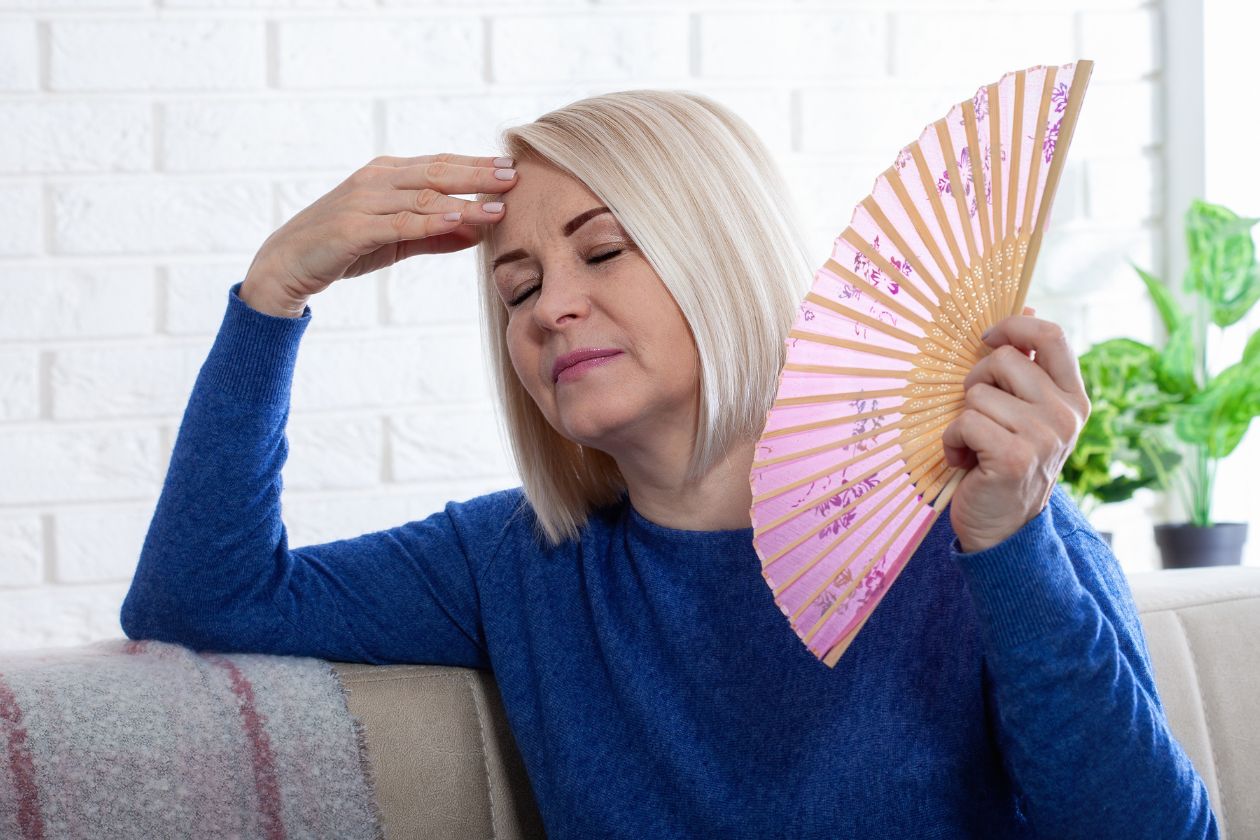If you’ve ever experienced a hot flash, you know it can feel like an intense, sudden wave of heat that seems to come out of nowhere. Hot flashes are a common symptom of menopause and can leave you feeling flushed, sweaty, and even a little dizzy. But what causes hot flashes, and more importantly, how do you treat them? Let’s explore the science behind hot flashes and discuss some effective treatments that can help you keep cool.
Table of Contents
The Science Behind Hot Flashes
To understand why hot flashes occur, you need to know what goes on in the body during menopause. As hormone levels fluctuate, the body’s internal “thermostat” can become disrupted. This can result in a sudden feeling of warmth, often accompanied by sweating and a rapid heart rate.
Declining Estrogen Levels
One of the key reasons for hot flashes is the decline in estrogen levels that occurs during menopause. Estrogen performs many functions within the body, including helping to regulate body temperature. As estrogen levels drop, the body may become more sensitive to temperature fluctuations, leading to the sensation of a hot flash.
Hypothalamus Overactivity
Another possible cause of hot flashes is overactivity of the hypothalamus, the part of the brain responsible for controlling body temperature. When the hypothalamus detects a slight increase in temperature, it reacts by triggering a hot flash in an attempt to cool the body down, even if there isn’t actually a need for it.
Finding Relief: Effective Hot Flash Treatments
Fortunately, there are several ways to lessen the severity and frequency of hot flashes. The key is finding a method that works best for you.
Lifestyle Changes
Making simple changes to your daily routine can help reduce hot flash symptoms. Some tips include:
- Dressing in layers, so you can easily remove clothing when a hot flash strikes
- Using cooling products, such as fans, chill pillows, and personal wearable cooling devices
- Avoiding triggers, such as caffeine, alcohol, and spicy foods
- Practicing relaxation techniques, like deep breathing exercises and meditation
Hormone Replacement Therapy
Hormone replacement therapy can help menopausal women by providing the appropriate dosage of missing hormones, such as estrogen and progesterone. This can help alleviate hot flash symptoms. However, hormone replacement therapy may not be suitable for everyone. It’s important to work closely with a healthcare professional if you’re considering this treatment option.
Alternative Treatments
Non-hormonal treatments, such as phytoestrogens (plant-based estrogen-like compounds), are also worth exploring. Some women have found relief with black cohosh, a popular herbal supplement believed to reduce hot flash frequency and severity. Always consult a healthcare professional before trying any supplements or alternative treatments.
Hot flashes: Why do they happen, and how do you treat them? These unwelcome symptoms of menopause can be a real nuisance, but understanding the science behind them and knowing your treatment options can help you find relief and maintain your quality of life.
Remember that everyone’s experience with hot flashes is unique, and what works for one person may not work for another. Keep an open mind, experiment with different treatments, and don’t hesitate to reach out to a healthcare professional for guidance and support. With the right approach, you can successfully manage your hot flashes and stay cool during this transitional phase.




